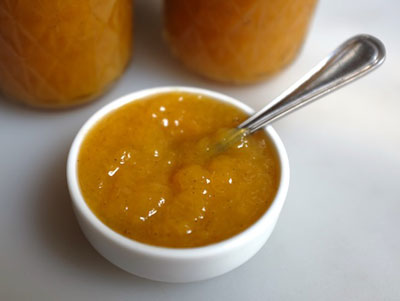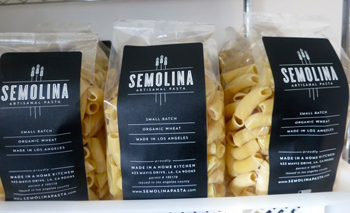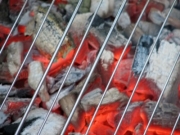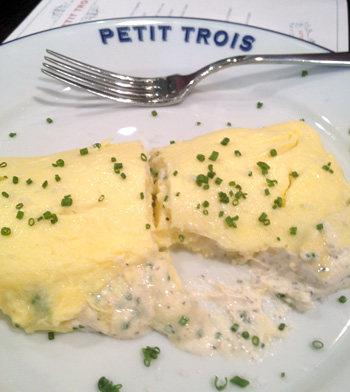 I am happy to be a "canbassador" for SweetPreservation.com, a community site of the Northwest cherry growers and soft fruit growers of Washington state. They sent me a big box of juicy, sweet, ripe Country Sweet peaches which I agreed to preserve, of course. A post from Dorie Greenspan on Facebook about ginger, peach vanilla jam inspired me to create preserves with the same flavor combination.
I am happy to be a "canbassador" for SweetPreservation.com, a community site of the Northwest cherry growers and soft fruit growers of Washington state. They sent me a big box of juicy, sweet, ripe Country Sweet peaches which I agreed to preserve, of course. A post from Dorie Greenspan on Facebook about ginger, peach vanilla jam inspired me to create preserves with the same flavor combination.
The difference between preserves and jam is sugar. Jam uses a lot of it and preserves use less. I like the flexibility of preserves. You can use preserves in place of jam but you can also use preserves in recipes or as a dessert topping. It's particularly good mixed with plain yogurt. The ginger and vanilla complement the tangy sweet flavor of peaches. I used a combination of fresh ginger and candied ginger, something I found in a ginger peach jam recipe. The ginger is very subtle, you just get a hint of it towards the end of each bite.

 I’m a pasta snob. I admit it and I don’t apologize for it. I believe that great pasta is an Italian cultural artifact that’s been given to the world. And when I talk about pasta I’m talking about DRY PASTA, that is, Durum Wheat pasta. Pasta made with semolina from exceptional (now, often North American) hard winter wheat.
I’m a pasta snob. I admit it and I don’t apologize for it. I believe that great pasta is an Italian cultural artifact that’s been given to the world. And when I talk about pasta I’m talking about DRY PASTA, that is, Durum Wheat pasta. Pasta made with semolina from exceptional (now, often North American) hard winter wheat. The flame war between charcoal grill purists and gas grill hotheads
burns brighter than the debate between Mac and PC users. You should
read some of the slop slung on the barbecue message boards. On second
thought, don't. Let me try to sort it out for you with a few
inflammatory thoughts.
The flame war between charcoal grill purists and gas grill hotheads
burns brighter than the debate between Mac and PC users. You should
read some of the slop slung on the barbecue message boards. On second
thought, don't. Let me try to sort it out for you with a few
inflammatory thoughts.
 I was never a fan of the omelette until I tried the one at
I was never a fan of the omelette until I tried the one at  There is undeniable pleasure in a plain beef burger — juicy, tender,
and well browned over a backyard grill — but there’s even more in a
jazzed-up one. If you begin with pork, lamb or beef that you buy
yourself and grind at home, and continue by adding seasonings
aggressively, you’re on your way to a summer full of great “burgers”
which are, in essence, sausages in burger form.
There is undeniable pleasure in a plain beef burger — juicy, tender,
and well browned over a backyard grill — but there’s even more in a
jazzed-up one. If you begin with pork, lamb or beef that you buy
yourself and grind at home, and continue by adding seasonings
aggressively, you’re on your way to a summer full of great “burgers”
which are, in essence, sausages in burger form.